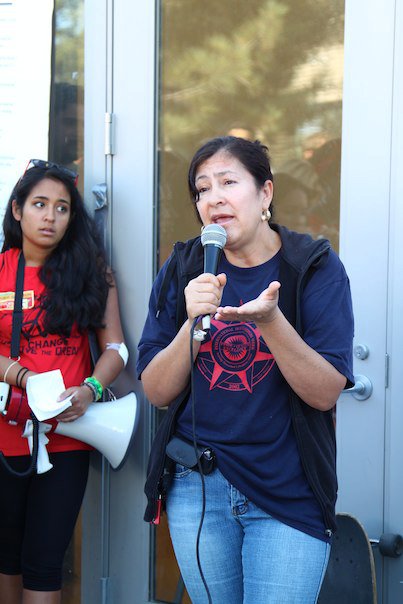Writer
Photo Eugene Ho
Following campaign promises, Gov. Jerry Brown signed the second part of the controversial California Dream Act, to the cheers of some and to the dismay of others.
In July, Brown signed the first part of the bill allowing illegal immigrants to receive private grants, scholarships and loans to fund their college education. The second part of this bill that was signed last Saturday, Oct. 8 will now enable illegal immigrants to be eligible for state founded aid, scholarships and waivers.
This bill will go in effect January 2013 and is estimated by the Department of Finance that somewhere around 2,500 students would be eligible to receive this aid, an approximated cost to the state of 14.5 million, about 1 percent of the state budget designated for the Cal Grant.
Illegal immigrants still will not qualify for federal student aid, but they will qualify for private loans and grants without having to be categorized as international students. The California Dream Act makes California the third state, after Texas and New Mexico, in the nation that allows state funds to help illegal immigrants pay for higher education.
Before the act was approved, illegal immigrants were eligible to pay in-state fees upon demonstrating evidence of attending a California high school and plans to become legal immigrants.
In order to benefit from this law, illegal immigrants must complete three years of their secondary education in a California high school. During those years they must demonstrate that their parents have paid taxes, have financial need and have the same qualifications as other residents that receive the aid. The aid they receive will be allocated after the residents have received their aid.
The California Dream Act differs from the federal Dream Act proposal in that it does not provide illegal immigrants with a pathway into citizenship.
Proponents of the bill argue that the California Dream Act will give students the opportunity to pursue higher education and become part of the intellectual capital of the state. They also argue that students are not to blame for having been brought illegally to the United States and the only thing preventing them from being Americans is the lack of documents.
“The Dream Act benefits us all by giving top students a chance to improve their lives and the lives of all of us,” Brown said.
“I’m actually very happy that the California Dream Act passed,” said fourth-year political science major Jasmin Esparza. “Sometimes I just worry, I ask myself if the financial aid for actual U.S. citizens is going to be reduced. It is not a selfish thought I just think about my sisters and the opportunities they are going to have, and whether or not they will be affected by the Act that was passed.”
Esparza is not alone in this concern. With the decrease in funding for education, some people consider the new bill unfair. These taxpayers believe using public funds to make college affordable for illegal students is a misuse of their taxes.
“It’s ridiculous. People always bring up the claim that ‘illegal immigrants’ pay taxes too” said first-year computer science major Metehan Ozten. “This is true in some cases (payroll taxes, sales taxes) however per person Illegal immigrants only pay a small fraction of the taxes that an equivalent legal citizen/immigrant pays.”
Like many who oppose the bill, Ozten said the money should be invested in Americans who are here legally.
“It’s crazy that the state of California is deciding to give more money away during such a budget crisis,” said Ozten. “Why should we be attempting to provide a cheap education to illegal immigrants when we can’t even provide it to our legal citizens?”
Those opposed also argue that the new bill will encourage more illegal immigration into the country, a problem that has incited the creation of anti-immigration laws in states throughout the U.S.












Comments are closed.